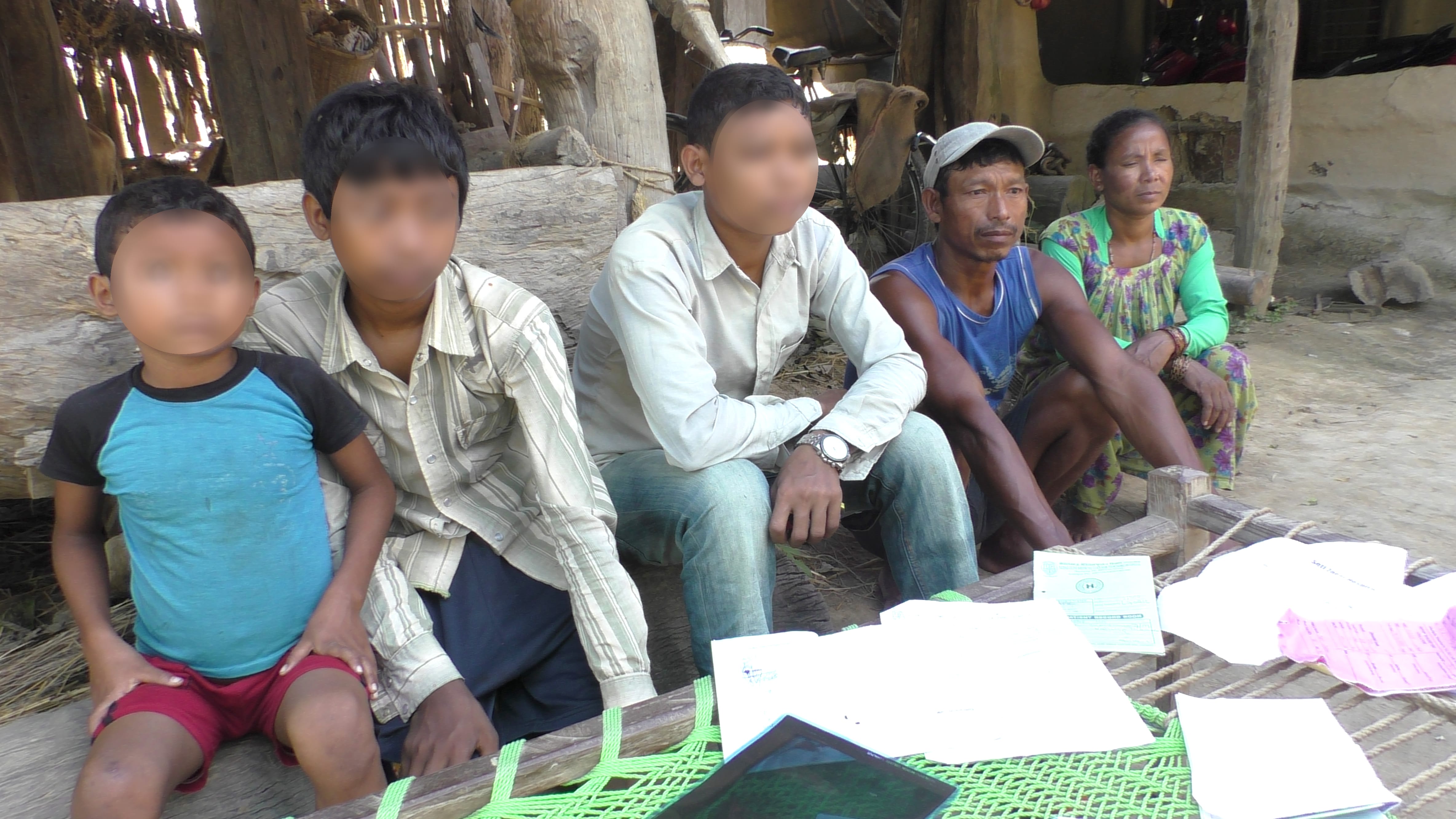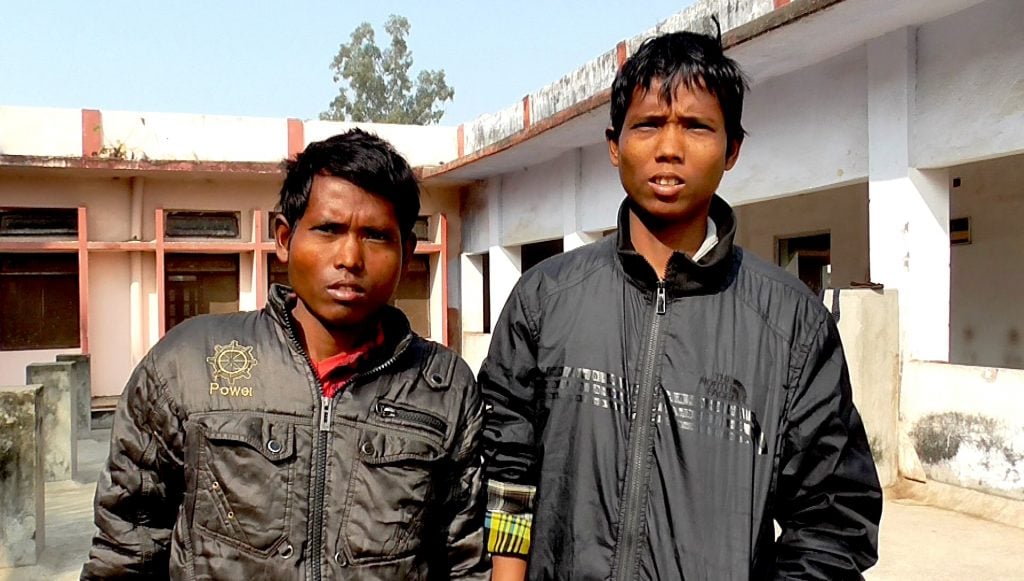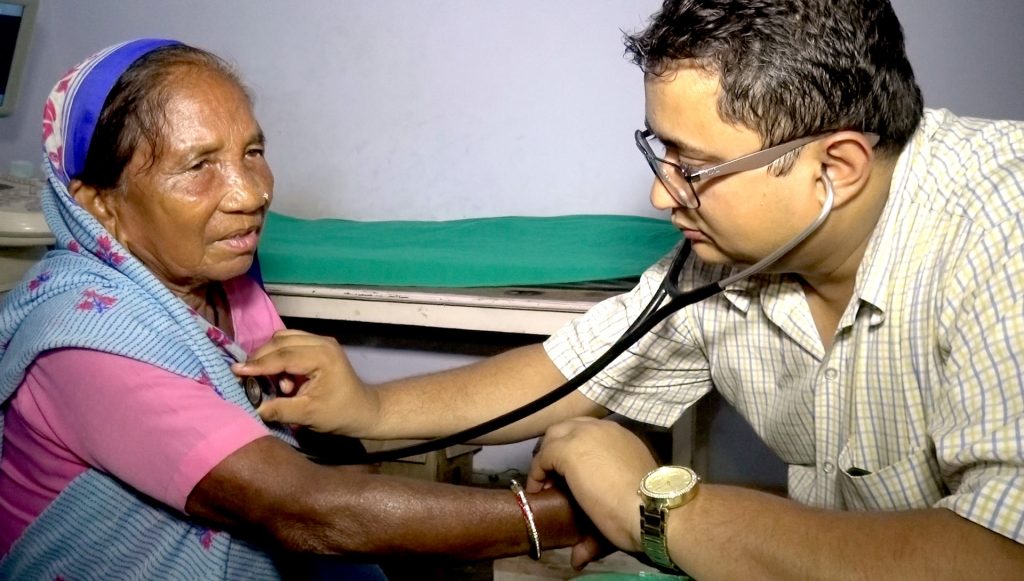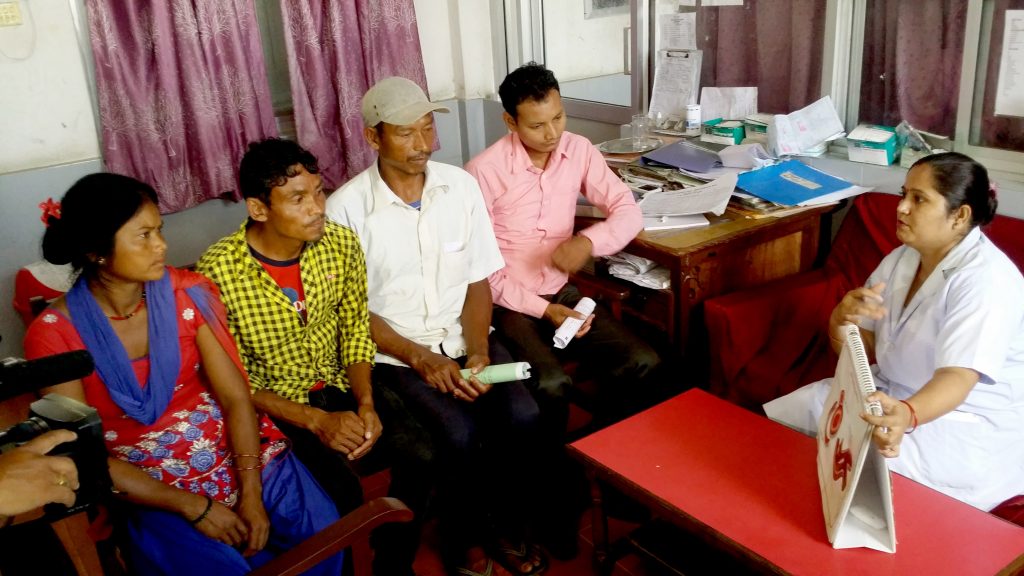A rare genetic disorder sickle cell anemia has become an epidemic, affecting an indigenous Tharu community of western Nepal, which needs urgent government attention.
KRISHNA ADHIKARI – Centre for Investigative Journalism
Seventy year old Devani Devi Dagaura (Tharu) of Masuria village in Kailali visited local faith healers to chemists, looking for answers about the falling health of her children and grandchildren. It was only after a proper diagnosis in the local hospital, Devi was told her four children had sickle cell anemia.
Her youngest son Ramesh died because of the lack of timely diagnosis. He was only 32. She is now worried for her daughter-in-law, who is heavily in debt and has little resources to treat 12 year old son Aayush who has also tested positive for the disease.
‘We spent around 600 thousand rupees for Ramesh’s treatment in the last 12 years, but we couldn’t save him. Now, his wife is burdened with the debt and treatment of their son too.’, laments Ramesh’s elder brother Bahumat. Bahumat has also been living with the disease, has spent thousands of rupees on his treatment.
Due to his failing health, he was forced to quit farming and give away his land on a lease. He now receives only half of the produce from his land, which he says has made it difficult for him to put food on the table for his family and manage his costly medical bills.
The disease has affected other members of Dagaura’s family, including his elder sister, and his elder brother, three nephews and nieces are also showing symptoms of the disease. Dr. Rajan Pandey of Ghodaghodi Hospital says, ‘Patients who are ‘sickling positive’ have 90 per cent chances of being positive for sickle cell as well.’
Sickle cell disease has devastated hundreds of families across western Tarai, as families spend millions of rupees due to lack of proper diagnosis, often resulting in the death of the patient. Kulraj Chaudhary was among the lucky. Chaudhary, a health assistant in Dang district, had been frequenting hospitals across Nepal and India for his wife Sita’s treatment.
Sita would complain acute pain in her joints, and her body had become weak over the years. Her sisters Suman and Samjhana also had the same condition. Few years later, when their son fell ill and the doctors in Kathmandu diagnosed him with a sickle cell anemia, they advised the parents to get themselves tested for the disease. Only then, did the family find that Sita had been suffering the disease too. It had taken more than 5 years, and Kulraj had already spent seven hundred thousand rupees on diagnosis and tests in hospitals in India and Nepal. He says, he hasn’t completed tests on himself to confirm if he too is carrying the disease.

Jugram and his four sons suffering from sickle cell anemia. Pics: Krishna Adhikari
There are many families in western Tarai where almost all the members suffer from sickle cell anemia. Jugram Chaudhary,40, works as a daily wage labourer in others’ farms. All his four children showed symptoms of sickle cell anemia like joint pains and stomach ache. Despite repeated rounds of local health posts and hospitals over the last five years, their condition remained unknown. It was only recently, they were diagnosed with sickle cell anemia. Jugram is relieved that the disease has been identified, but he is heavily in debt and worries about paying for their treatment.
‘Our situation has gone from bad to worse, and we have yet to carry out tests on my daughter,’ says Jugram. The disease has also adversely affected children’s studies and the parents worry if their children will be able to get married and live a life on their own.

Brothers suffering from sickle cell anemia at Bheri Zonal Hospital.
Mahadev Tharu of Baridya had also been living with the disease for over 20 years. He visited doctors all over Nepal and India, and each of them came up with their own diagnosis and prescribed medication that didn’t help. His savings was running out with every medical consultation, until he was heavily in debt. When his condition started deteriorating rapidly last year, her went to Bheri Zonal Hospital for the third time for consultation. Only then, did Dr. Rajan Pandey there suggested him to get tested for sickle cell anemia. His blood samples were sent to Haryana in India, and the test results confirmed he had been suffering from sickle cell anemia. Mahadev had suffered for 20 years and spent at least a million rupees to find out what was making him sick.
Sickle cell, Tharus and the State
Sickle cell anemia diagnosis requires the testing of hemoglobin in blood. But the facility isn’t available in most of the government hospitals across the affected districts of western Nepal. Hence, the patients are forced to pay for expensive treatment in private hospitals of Kathmandu and India.

Dr. Rajan Pandey examines a Tharu patient in a health camp at Bheri Zonal Hospital.
Dr. Rajan Pandey of Bheri Zonal Hospital says, ‘ It is a genetic disorder in which regular round red blood cells are replaced with sickle-shaped red blood cells which get stuck in the vein, deplete oxygen flow and cause severe body pain in patients.’ Pandey, who has been part of several studies on the disease in the past adds, ‘our findings indicate that sickle cell disease may be prevalent in areas affected by malaria, because the gene for sickle cell seems to provide its carrier with resistance against malaria. The Tharus of western Terai have developed a greater resistance to malaria than non-Tharus and this change in their gene may have resulted in sickle cell anemia.’
Dr. Shyam Sundar Yadav of Bheri Hospital adds, ‘patients of sickle cell anemia have low blood flow, and are more susceptible to infections, and if they don’t receive care on time it can even result in their death.’ The doctors reckon, sickle cell anemia patients cannot be completely cured, but they can live longer and keep their condition in check through regular medication and visit to the hospital.
Patients of sickle cell anemia may need medication between few months for some, up to a year, depending on the severity of their condition. This further adds burden on the family, especially on those from the impoverished Tharu community. ‘Without government support, these patients are doomed to die’, says local politician Chandra Bahadur Chaudhary.
According to a 2016 study by Pokhara University that looked into health condition of Tharus in Banke and surrounding area, 12 per cent of the respondents had sickle cell. According to 2011 census, of the 1.8 million population of Tharus, nearly 1.1 million live the ten districts of western Tarai.
The only glimmer of hope for thousands of Tharu families suffering from this ordeal has been the recent government decision to provide the patients with one hundred thousand rupees worth of treatment. But this is far from enough for hundreds of families like Devani Devi’s and Jugram’s, who are already in heavy debt and have no resource for further treatment.

Sickle cell anemia patients attend counseling session at Seti Zonal hospital.
To make situation worse, the government support requires going through complex paperwork procedures that becomes a hassle for the sick. The patients are required to provide a blood test report to prove they have a sickle cell anemia. But, the hospitals in western Nepal don’t have the facility, so the patients need to fork out extra money to send their samples to Kathmandu or bordering Indian town. After they receive the report, they need a recommendation letter from VDC or municipality to reach out to district health office, which finally provides a letter that makes patients eligible for the government grant. It is a frustrating process for patients from remote villages who have to travel to district headquarters to get the paper work done, which could take several months.
‘Given the extent of the problem, the government should work to make the testing and treatment facility available at village health posts, like they have done it for the TB patients.’ says Tharu lawmaker Gopal Dahit.
As Dahit suggests, the government needs to take urgent action to address this health crisis unfolding in Tharu community. In order to raise awareness and to prevent cases of sickle cell anemia in future generation, the government must also invest in researching the disease and running campaigns in the affected districts.



